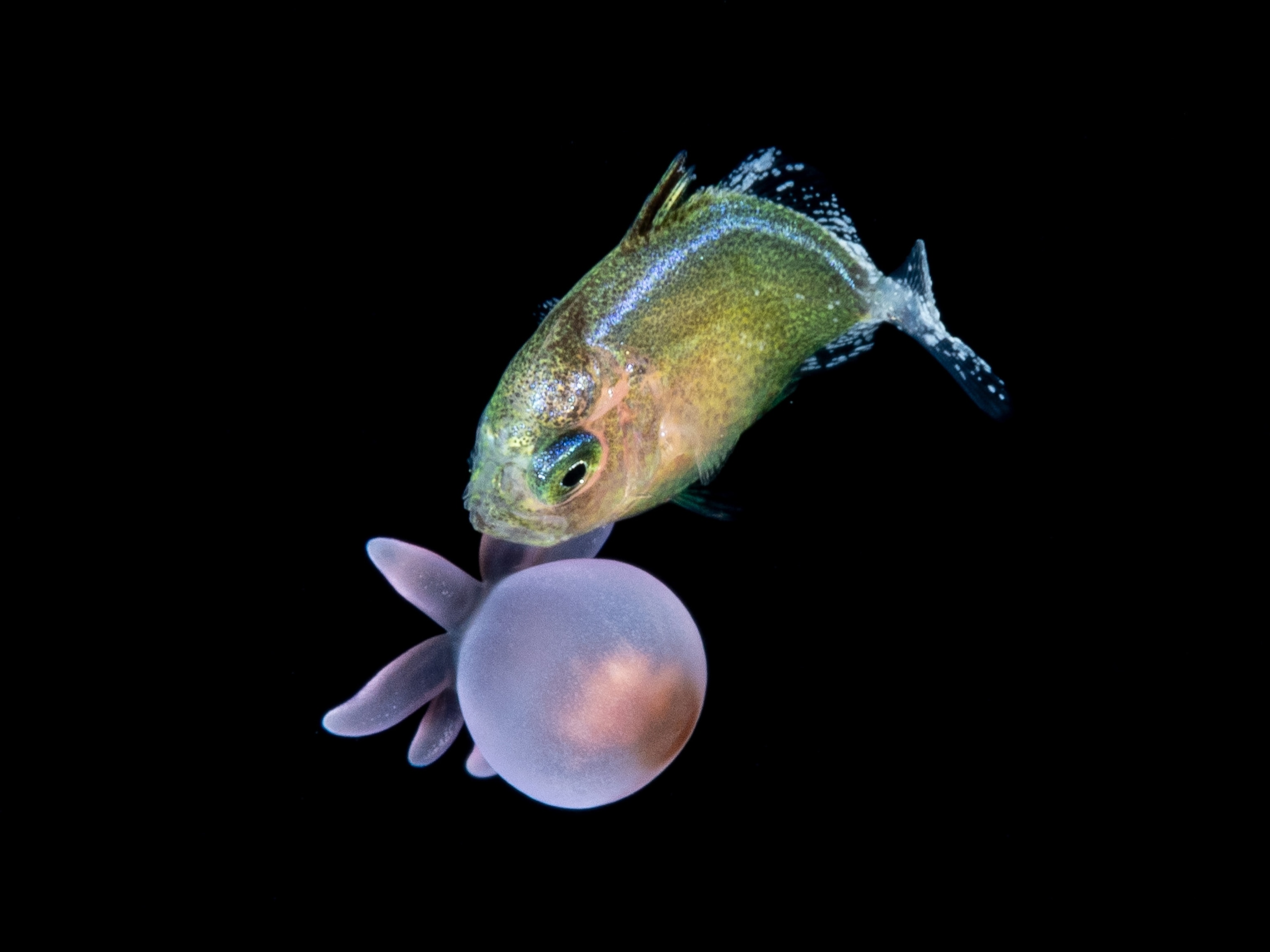Unique anatomical structures, proteins, and cell membranes allows them to withstand crushing pressure and darkness.
At the deepest point in the ocean lives a fish that is pink, slimy, and looks a bit like an oversized tadpole, up to a foot long.
In the Mariana Trench—7,000 meters below the ocean’s surface—these fish makes a living in total darkness and at crushing pressures that can reach 1,000 times more than at sea level.
But the Mariana snailfish is not only abundant in this area; it’s the region’s top predator. How does an animal make a living in such an extreme place? (See "How the Mariana Trench Became Earth's Deepest Point.")
New research provides clues. In a study published in Nature Ecology & Evolution, Chinese researchers examined the anatomy and genetics of the fish. The team picked up specimens from around 23,000 feet below sea level using remotely-operated landers, and analyzed the creatures’ genes, proteins, and anatomy. (See how some deep-sea fish blend in with the darkness.)
They found a few peculiarities. For one, the fish have gaps in their skulls. First author Kun Wang, from the Northwestern Polytechnical University, says this “may help the internal and external pressures to be balanced.” In other words, if the fish had a complete and fused skull, it would be crushed by the pressure.
What’s more, their bones are not entirely made of, well, bone—but are largely cartilage. In fact, the team found that the fish have a mutation in the primary gene responsible for calcification, the buildup of calcium to harden the bones. This mutation renders the gene partially nonfunctional. Wang says this makes their bones more flexible and likely more able to withstand pressure.
Such high pressures can also break down proteins, which are important for normal physiological processes. The team found that the fish have high levels of a substance called trimethylamine N-oxide (TMAO), which is used to stabilize proteins. Most animals have one copy of these gene, while these fish have five.
Even moving chemicals into and out of cells can be difficult at these high pressures. The Mariana snailfish makes up for this by producing high numbers of proteins that transport necessary substances, Wang says.
Finally, the fish lack functional eyes and did not respond to the lights of the team’s lander, consistent with previous research. That’s likely because these creatures lack several key photoreceptor genes, the study found. Since they live in complete darkness, there’s no need to be able to detect light they’ll never see.





